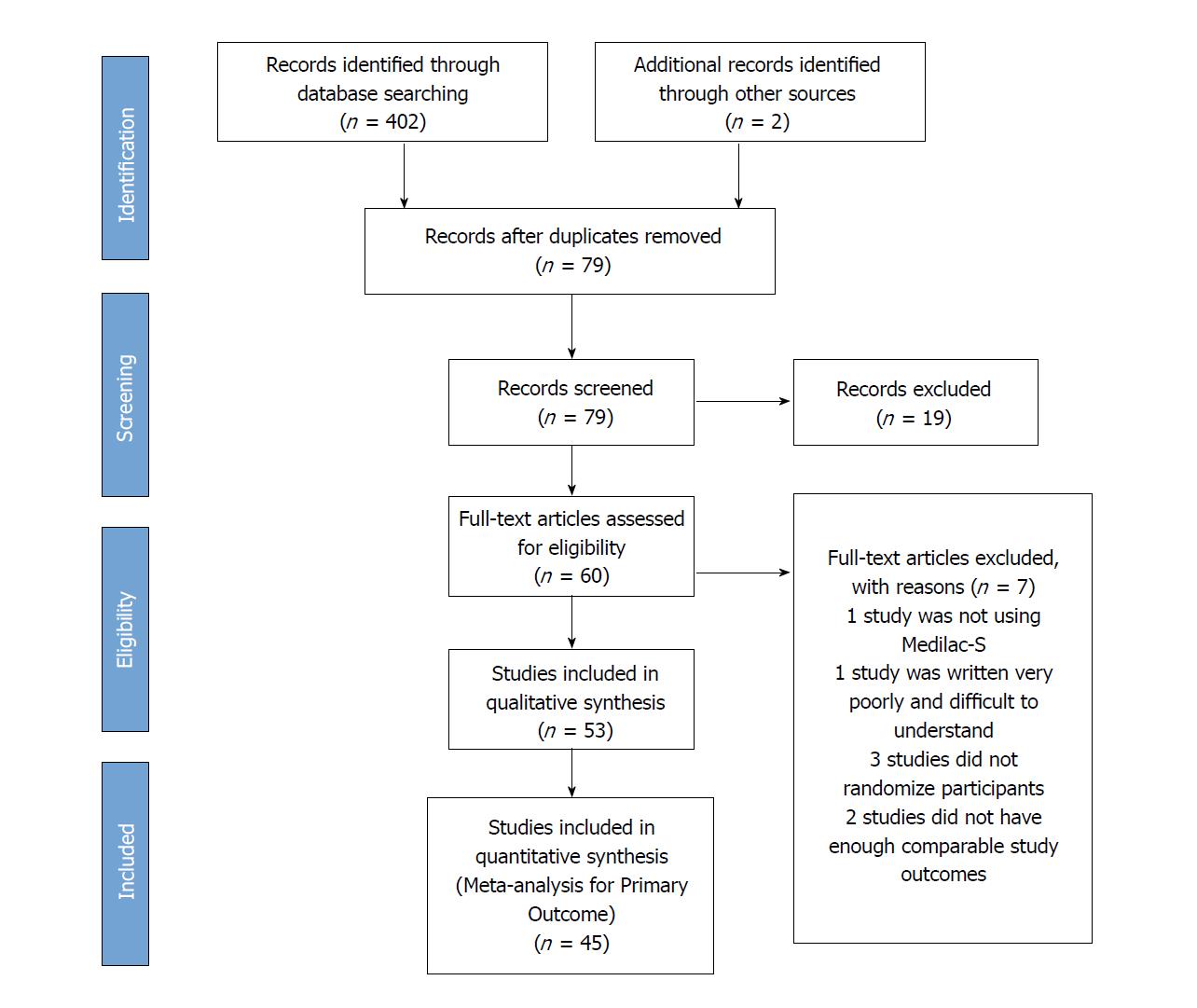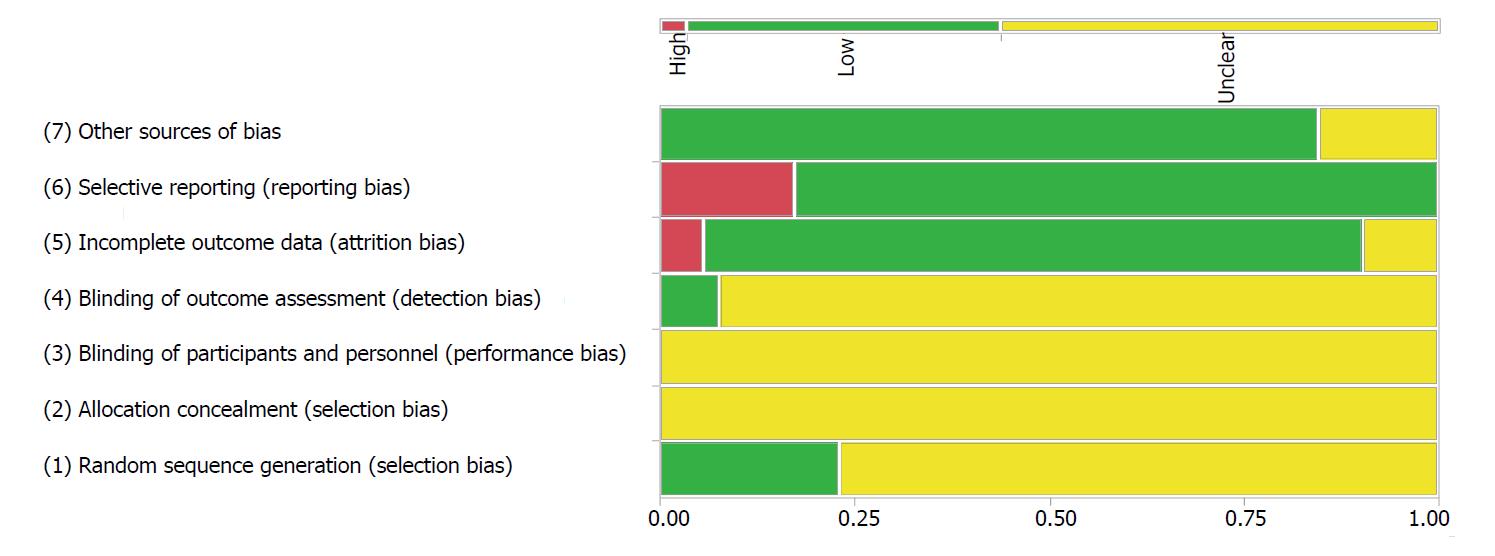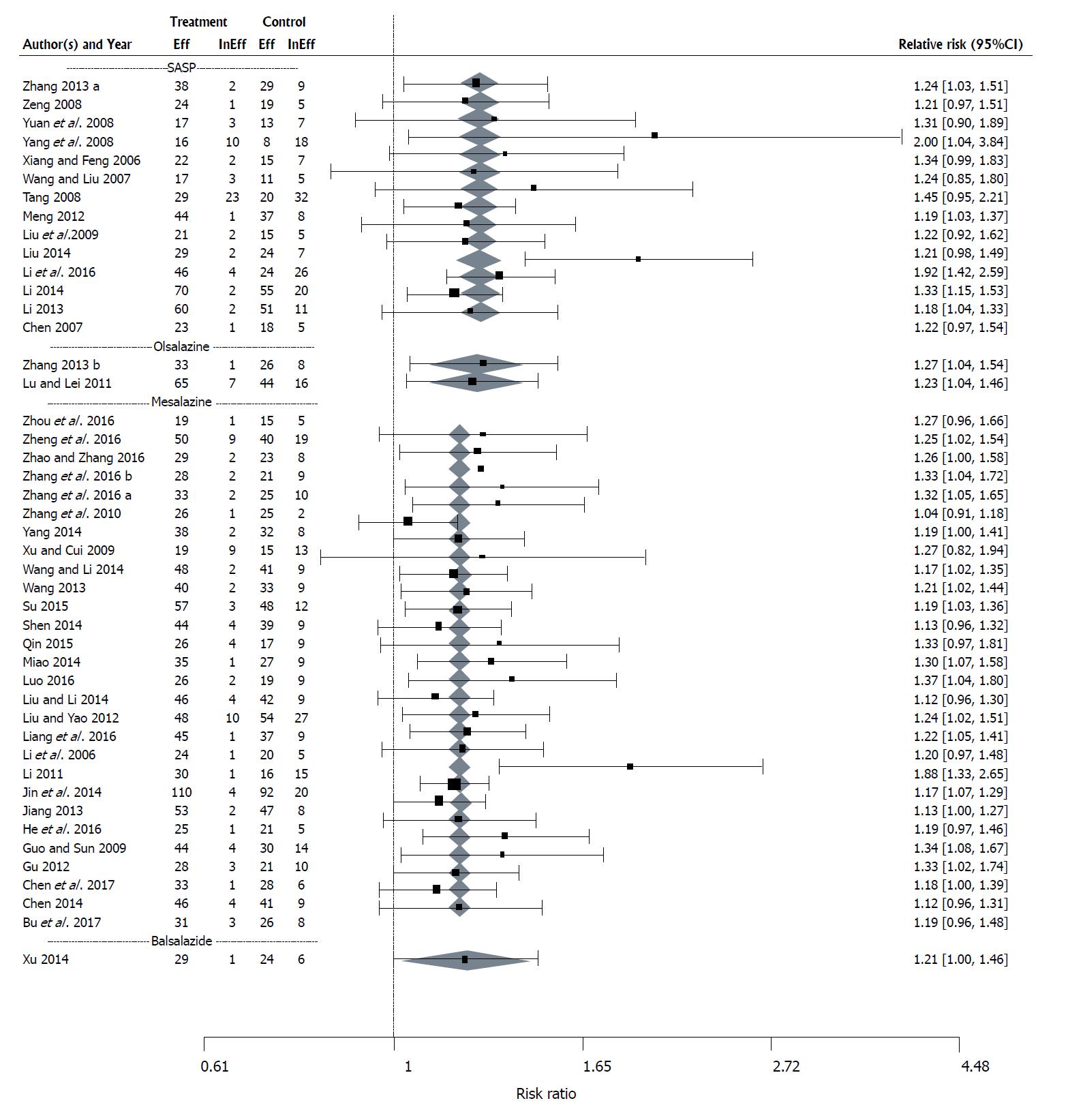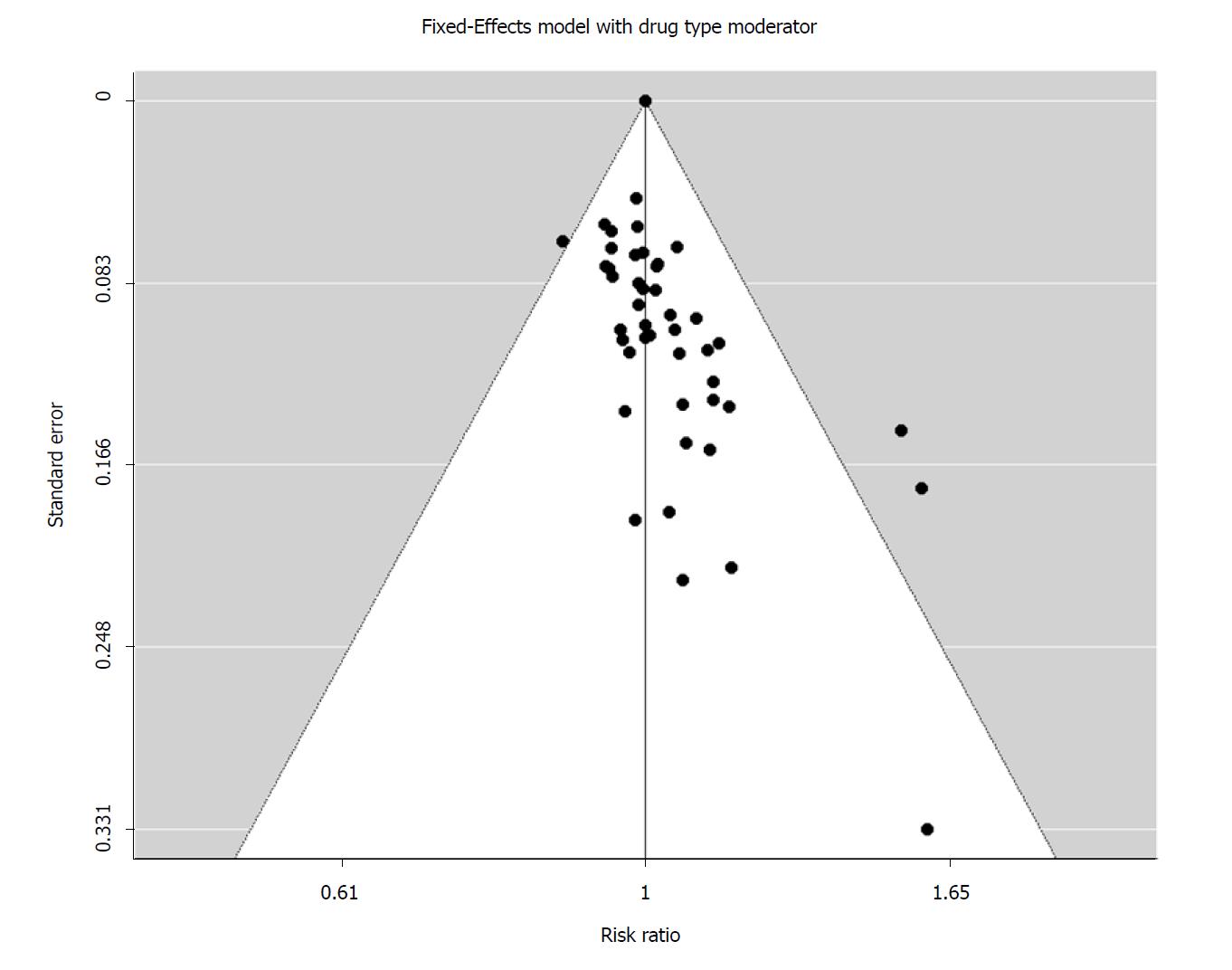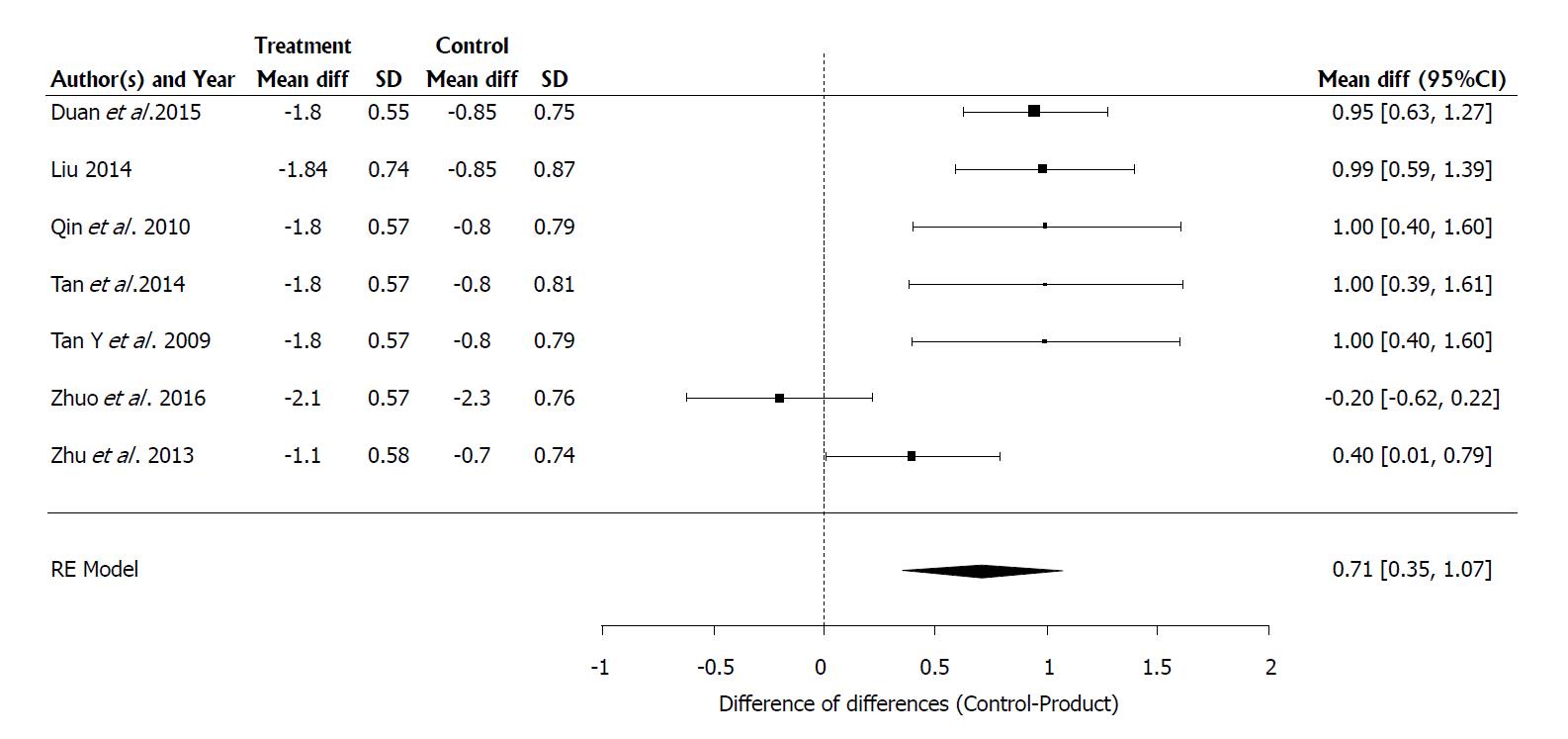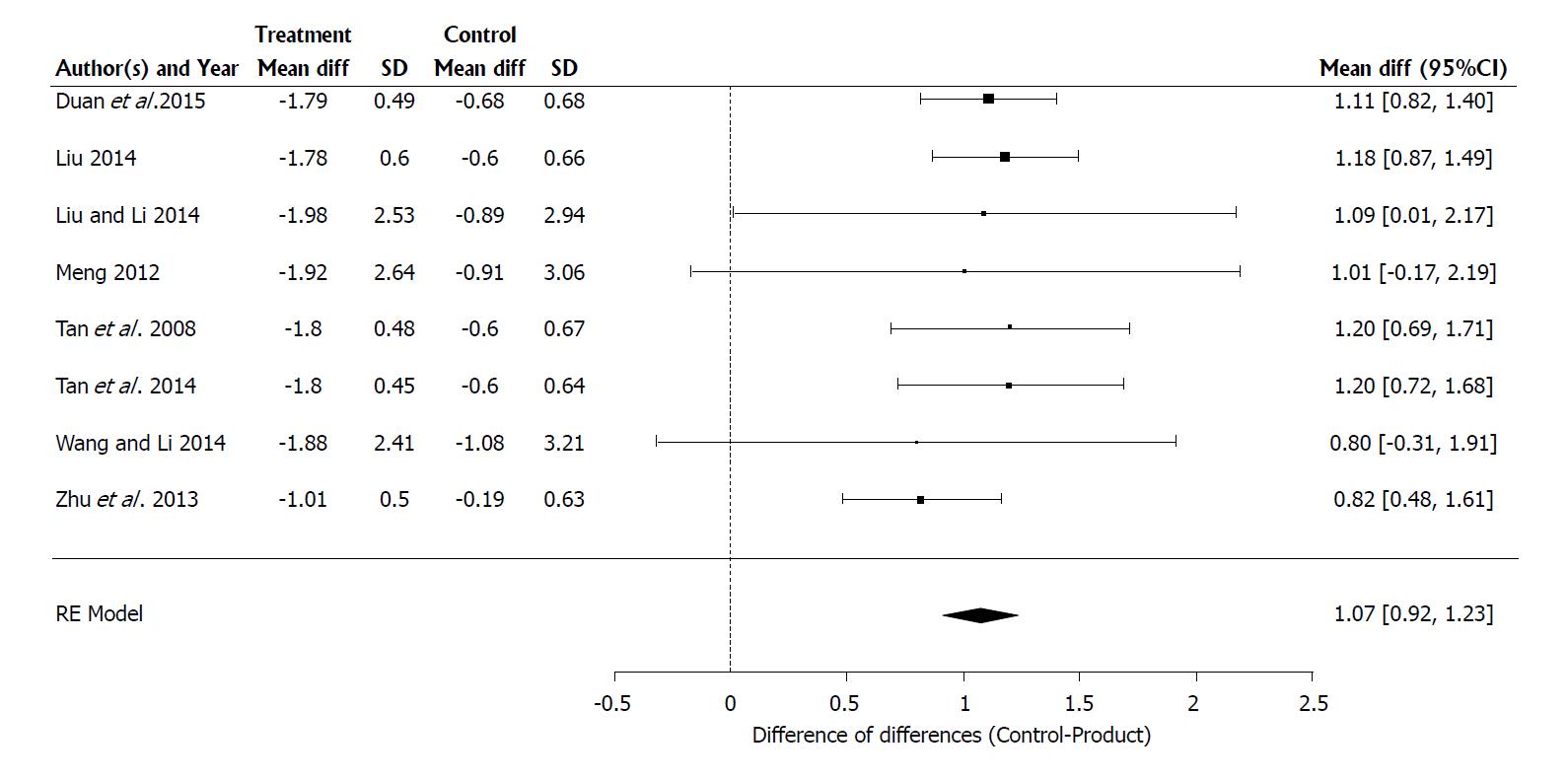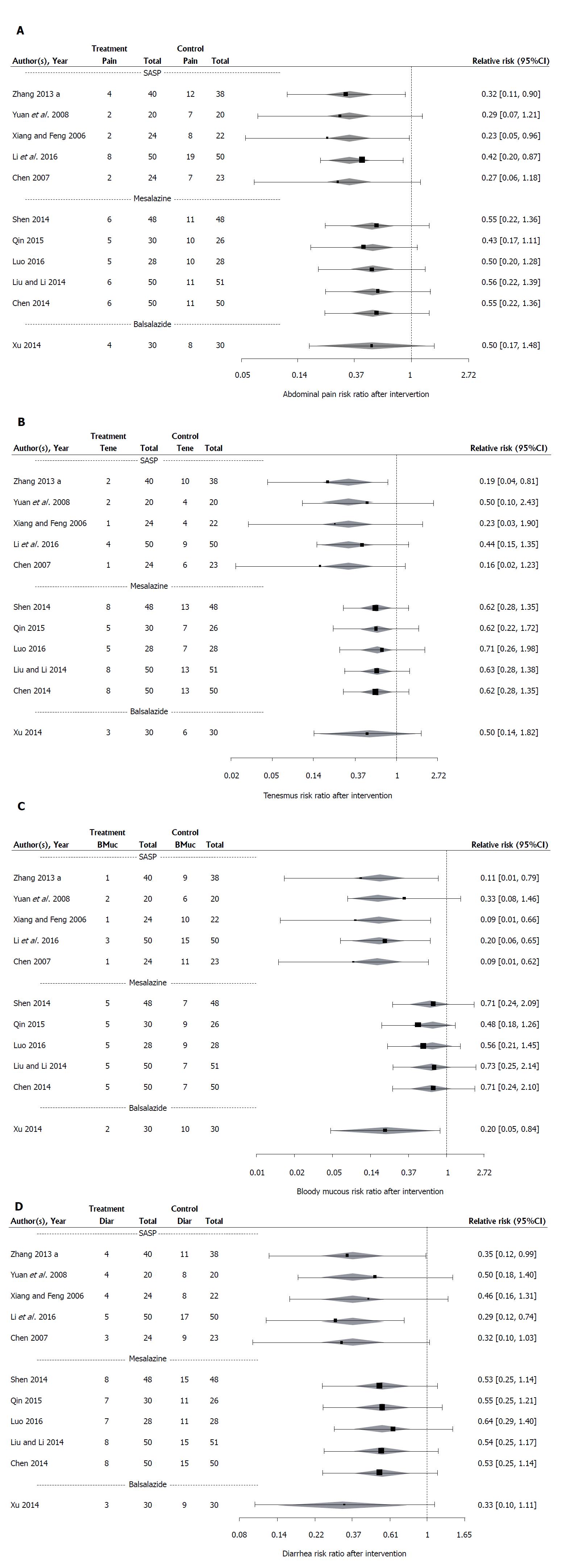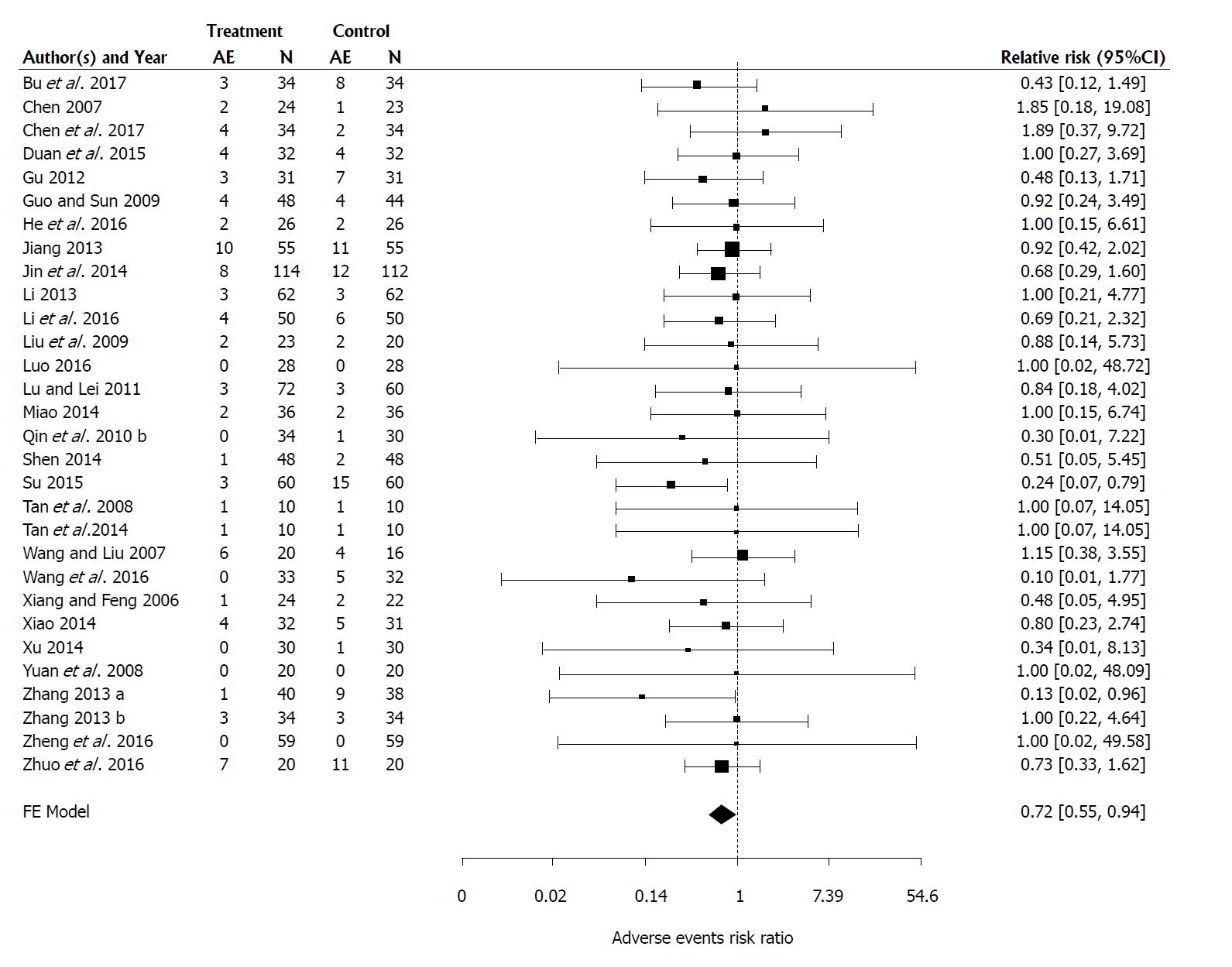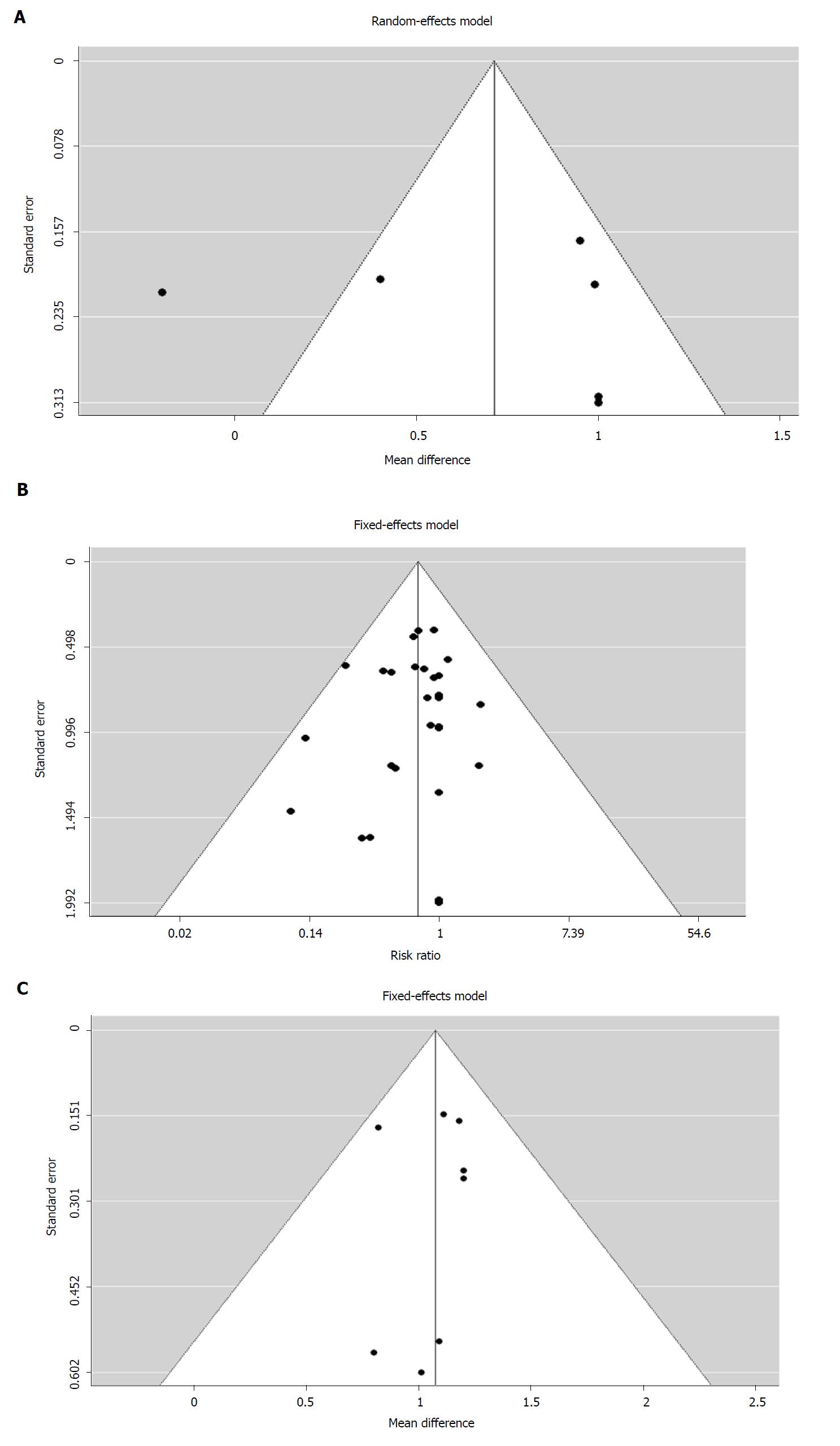Copyright
©The Author(s) 2018.
World J Clin Cases. Dec 6, 2018; 6(15): 961-984
Published online Dec 6, 2018. doi: 10.12998/wjcc.v6.i15.961
Published online Dec 6, 2018. doi: 10.12998/wjcc.v6.i15.961
Figure 1 Study selection flow diagram.
Figure 2 Risk of bias mosaic plot showing proportion of studies deemed to be at high (red), unclear (yellow) or low (green) risk in each bias category.
Figure 3 Forest plot of the results of a fixed effects meta-analysis with a moderator for concomitant drug therapy with 45 studies evaluating the effect of Medilac-S® in combination with conventional drug therapy on clinical efficacy.
“Eff” is the number of subjects in the study for which the treatment was effective and “InEff” is the number of subjects in the study for which the treatment was ineffective. The relative risk (RR) and its 95%CI for each study are listed on the right hand side of the graph. The 95%CI for the estimated mean RR for each concomitant drug therapy category is shown as a shaded diamond with the endpoints of the diamond being the CI endpoints and the location of the maximum width of the diamond being at the estimated mean RR for that drug type. The vertical dashed line at 1 indicates a RR of 1 which occurs when there is no observed difference between the treatment and the control.
Figure 4 Funnel plot showing the relationship between the relative risk and its standard error for each of 45 studies used in a fixed effects meta-analysis with a moderator for concomitant drug therapy evaluating the effect of Medilac-S® in combination with conventional drug therapy on clinical efficacy.
Figure 5 Forest plot of the results of a mixed effects meta-analysis with a moderator for concomitant drug therapy, with 6 studies evaluating the effect of Medilac-S® in combination with conventional drug therapy on the change in mean Sutherland index score evaluating three clinical symptoms and a global physician’s assessment.
“Mean” is the mean index and “SD” is the standard deviation for each study; the difference between the treatment and control of the mean indices at the end of the study and its 95%CI is listed on the right hand side of the graph; the 95%CI for the estimated mean difference for each concomitant drug therapy category is shown as a shaded diamond with the endpoints of the diamond being the CI endpoints and the location of the maximum width of the diamond being at the estimated mean difference for that drug type.
Figure 6 Forest plot of the results of a random effects meta-analysis with 7 studies evaluating the effect of Medilac-S® in combination with conventional drug therapy on the change in mean endoscopic score evaluating mucosal friability, hyperemia, granulation, spontaneous bleeding and ulceration.
“Mean Diff” is the change of the treatment mean score from the baseline mean score and “SD” is the standard deviation of the mean change; the difference between the treatment and control of the change in the mean score and its 95%CI for each study is listed on the right hand side of the graph; the 95%CI for the estimated mean difference in the change from baseline for each concomitant drug therapy category is shown as a shaded diamond with the endpoints of the diamond being the CI endpoints and the location of the maximum width of the diamond being at the estimated mean difference for that drug type; the vertical dashed line at 0 indicates a difference of 0 which occurs when there is no observed difference between the change from baseline for the treatment and the control.
Figure 7 Forest plot of the results of a random effects meta-analysis with 8 studies evaluating the effect of Medilac-S® in combination with conventional drug therapy on the change in mean histological score, evaluating colonic histological specimens for inflammation and crypt distortion.
“Mean Diff” is the change of the treatment mean score from the baseline mean score and “SD” is the standard deviation of the mean change; the difference between the treatment and control of the change in the mean score and its 95%CI for each study is listed on the right hand side of the graph; the 95%CI for the estimated mean difference in the change from baseline for each concomitant drug therapy category is shown as a shaded diamond with the endpoints of the diamond being the CI endpoints and the location of the maximum width of the diamond being at the estimated mean difference for that drug type; the vertical dashed line at 0 indicates a difference of 0 which occurs when there is no observed difference between the change from baseline for the treatment and the control.
Figure 8 Forest plots of the results of fixed effects meta-analysis with a moderator for concomitant drug therapy for 11 studies evaluating the effect of Medilac-S® in combination with conventional drug therapy on number of participants reporting clinical symptoms including: (A) abdominal pain; (B) tenesmus; (C) blood and mucous in stool; and (D) diarrhea.
“Pain” is the number of participants reporting abdominal pain in each study, “Tene” is the number of participants reporting tenesmus in each study, “BMuc” is the number of participants reporting blood and mucous in stool in each study, “Diar” is the number of participants reporting diarrhea in each study, and “Total” is the total number of participants in each study. The relative risk (RR) and its 95%CI for each study is listed on the right hand side of the graph. The 95%CI for the estimated mean RR for each concomitant drug therapy category is shown as a shaded diamond with the endpoints of the diamond being the CI endpoints and the location of the maximum width of the diamond being at the estimated mean RR for that drug type. The vertical dashed line at 1 indicates a RR of 1 which occurs when there is no observed difference between the treatment and the control.
Figure 9 Forest plots of the results of fixed effects meta-analysis with 30 studies evaluating the effect of Medilac-S® in combination with conventional drug therapy on number of participants reporting adverse events.
“AE” is the number of participants reporting adverse events within a study and “N” is the total number of participants within the study. The relative risk (RR) and its 95%CI for each study are listed on the right hand side of the graph. The 95%CI for the estimated mean RR for each concomitant drug therapy category is shown as a shaded diamond with the endpoints of the diamond being the CI endpoints. The vertical dashed line at 1 indicates a RR of 1 which occurs when there is no observed difference between the treatment and the control.
Figure 10 Funnel plots showing the relationship between the relative risk and its standard error for (A) 7 studies used in a random effects meta-analysis evaluating the efficacy of Medilac-S® in combination with conventional drug therapy on change in mean endoscopic score (B) 8 studies used in a fixed effects meta-analysis evaluating the efficacy of Medilac-S® in combination with conventional drug therapy on change in mean endoscopic score and (C) 30 studies used in a fixed effects meta-analysis evaluating the efficacy of Medilac-S® in combination with conventional drug therapy on change in the number of reported adverse events.
Figure 11 Funnel plot showing the relationship between the relative risk and its standard error for each of 11 studies used in a fixed effects meta-analysis with a moderator for concomitant drug therapy evaluating the effect of Medilac-S® in combination with conventional drug therapy on number of reported clinical symptoms for (A) abdominal pain and (B) tenesmus.
- Citation: Sohail G, Xu X, Christman MC, Tompkins TA. Probiotic Medilac-S® for the induction of clinical remission in a Chinese population with ulcerative colitis: A systematic review and meta-analysis. World J Clin Cases 2018; 6(15): 961-984
- URL: https://www.wjgnet.com/2307-8960/full/v6/i15/961.htm
- DOI: https://dx.doi.org/10.12998/wjcc.v6.i15.961









